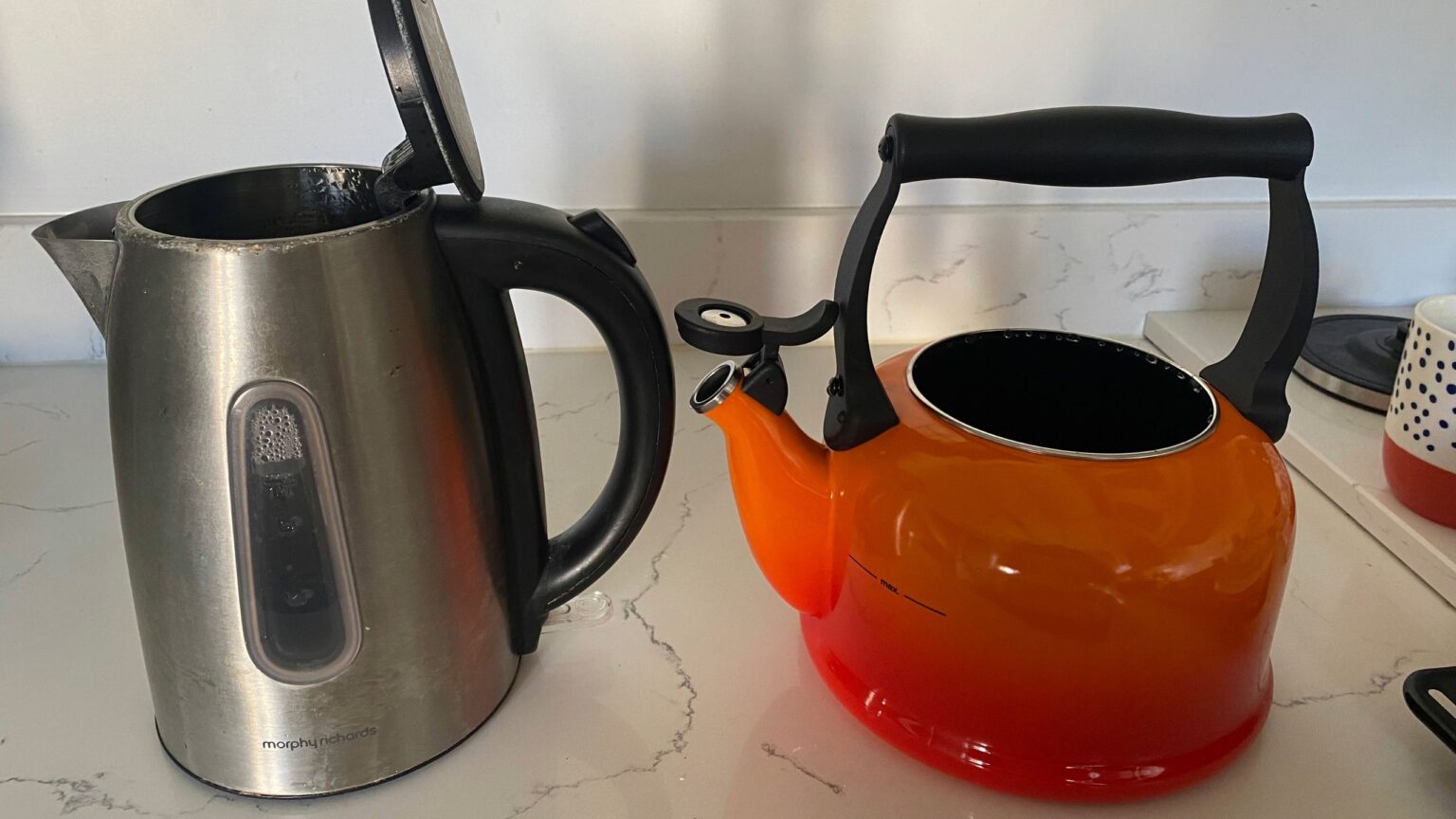One of the essential elements of a cosy country kitchen is a whistling stovetop kettle but is there merit to having one in your kitchen over an electric version? And crucially, can they provide you with the same sort of convenience?
That’s the question at the heart of the stovetop vs best electric kettle debate and one that I’ve tried to solve by testing both out side by side. It’s fair to say that the stovetop candidate that we tried is hard to beat in terms of its charming vintage design, but at £125 (via Le Creuset), you’d definitely expect the performance to match the price tag. Here’s what we discovered when we put these kettles head-to-head.
Le Creuset
Traditional Stovetop Whistling Kettle, 2.1l
Available in a selection of classic Le Creuset colours, this kettle is a true classic.
ProCook
Stainless Steel Kettle
This designer-look kettle is currently Ideal Home’s favourite pick on the market after testing dozens, with a fantastic price tag for the quality.
Which is the best value?
Stove top kettles are, on the whole, more expensive as an initial investment than a standard electric kettle though you can pick up cheaper options (like this £30 Typhoon kettle from Dunelm).
But if you’re after an electric kettle with real longevity, like picks from Dualit and KitchenAid, you’re likely to pay just as much if not more than you would for a stove top version. Case in point – Dualit’s bestselling Classic Kettle will set you back £159.99, though it does come with a one year guarantee and is made with repairable elements so that you can shop spare parts if you need to.
With a non-electrical kettle, there is the argument that there’s a lot less that can go wrong with no wiring or spare parts needed making it a better long term-choice (and more sustainable).
It’s also worth noting that Le Creuset’s Traditional Stove Top kettle comes with a five year warranty, though cheaper versions might not be so iron-clad on this front.
Which is best to use?
This one will ultimately come down to personal preference, but after testing both side by side, our reviewer had plenty of positives to using a stove top kettle that she hadn’t necessarily factored in beforehand.
The first is that her stove top kettle was actually quieter in use than her electric version, save from the obvious sharp whistle at boiling point. Our reviewer likes to listen to podcasts whilst she cooks or potters and found that her electric kettle was so loud that she’d often have to pause those as she boiled it. With the stove top, she found it was considerably quieter throughout the boil process.
It also meant she could cut down on the number of appliances on her worktop, with the stove top kettle living full-time on her hob instead. When not in use, she found it easier to stash away in a cupboard rather than dealing with the various parts of an electric kettle.
But what about pure convenience? Well, during testing, she found that her stove top kettle took 7 minutes and 3 seconds to boil 1.7 litres of water, while her electric kettle took just 4 minutes 18 seconds in the same test. For a quick boil then, there is an obvious winner.
Which is easier to clean?
How regularly are you remembering to clean the inside of your kettle? For me, it’s not nearly enough – which is where easier to clean kettles can come up trumps, especially for those who live in hard water areas.
Electric kettles can be trickier to clean in their entirety due to connection points, while a stovetop kettle can take more of a thorough clean and scrub like a frying pan can. Our reviewer also found it easier to dry out too.
Which is best for your home?
For many, the pure convenience of an electric kettle simply can’t be beaten, and when faced with the boiling numbers from our tests, that’s easy to understand. But there’s also plenty to like about stove top kettles beyond how charming they look on your hob – sustainability, quietness and ease of cleaning are all positives.
So if you’ve been eyeing a stove top version but question the practicalities, we think there’s plenty to like about a stove top kettle!
Read the full article here

